Trying to see any city in a day is probably an act of madness.
But if you only have 24 hours to spare, the good news is Barcelona isn’t a hard one to try to sightsee in.
All in all, Barcelona has all you need to blitz a day of sightseeing.
It’s a pretty compact city, it has excellent public transport, and a lot of attractions are concentrated in a small part of town.
With one day in Barcelona, you have no hope of seeing it fully: but you do have a shot at getting a good impression of the city.
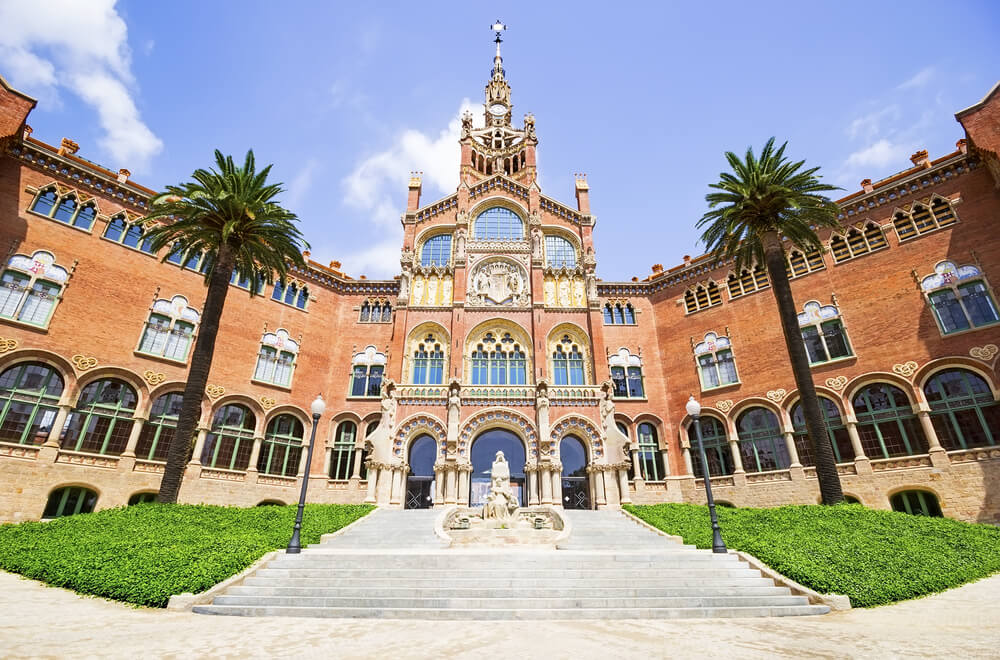
After living in Barcelona for over a decade, I’ve helped many friends see the city, no matter how much time they have to visit — and here are my top picks for what you should prioritize with only one day in Barcelona.
Unfortunately, that means some things had to go (sorry, Park Guell, you’re beautiful but save it for another visit!)
Here’s my guide to seeing Barcelona in a day.
Start at the Plaça de Catalunya and Las Ramblas.
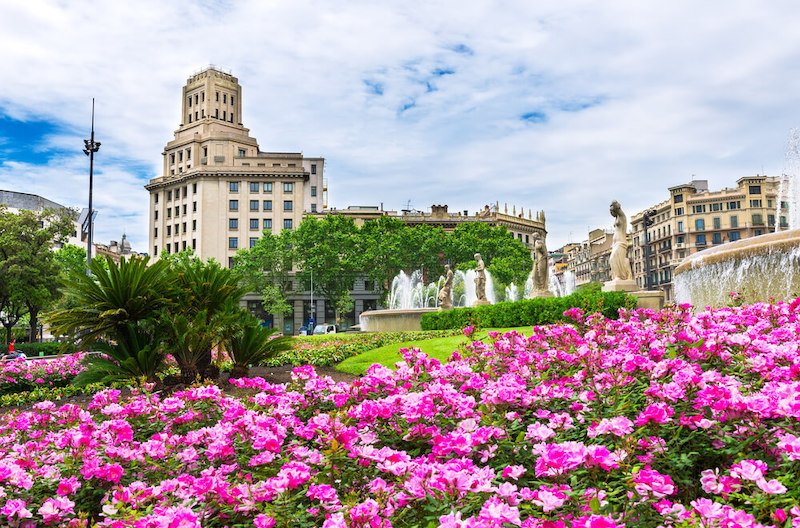
An obvious place to start, this square at the top of Las Ramblas is served by the Catalunya metro stop.
Or if you are coming straight from the airport, like if you’re visiting Barcelona on a layover, you could get the A1 Aerobus here!
Talking of transport, given that our one day Barcelona itinerary is going to be busy, the best ticket to buy is the T-Dia, which gives you unlimited travel on public transport for the day.
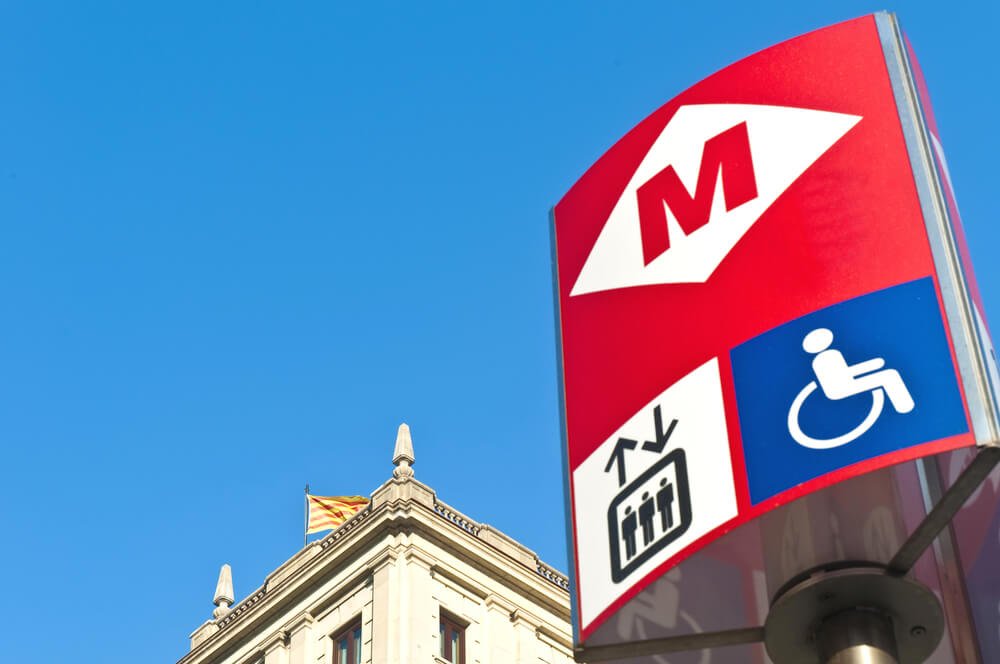
The square is huge and monumental, definitely worth exploring for photo opportunities among its statues of lions and ancient heroes.
There are also some flagship stores around, notably the famous El Corte Inglés department store.
Las Ramblas are the real draw, however.
Probably the most famous road in Spain, this mile-long avenue has a wide central pedestrianized area, ideal for a leisurely stroll.

Local’s note: you can call this street its official name, La Rambla, but it is technically a series of a number of streets (Rambla de Canaletes, Rambla dels Estudis, etc).
That’s why many people also talk of it in the plural, i.e., Las Ramblas (Spanish) or Les Rambles (Catalan).
It is touristy, and in peak season you might find yourself accosted by people selling trinkets or waiters touting their restaurants, but it is still an unmistakeably magical walk.
My tip as a local is to make sure you look up! A lot of the buildings are really beautifully decorated or have eye-catching rooftops – something of a recurring theme in this town.
On a one-day trip, I wouldn’t put pressure on myself with any must-sees along Las Ramblas, but one obvious highlight would be La Boqueria, a fruit market about five minutes’ walk down the street from Plaça Catalunya, on the right-hand side.
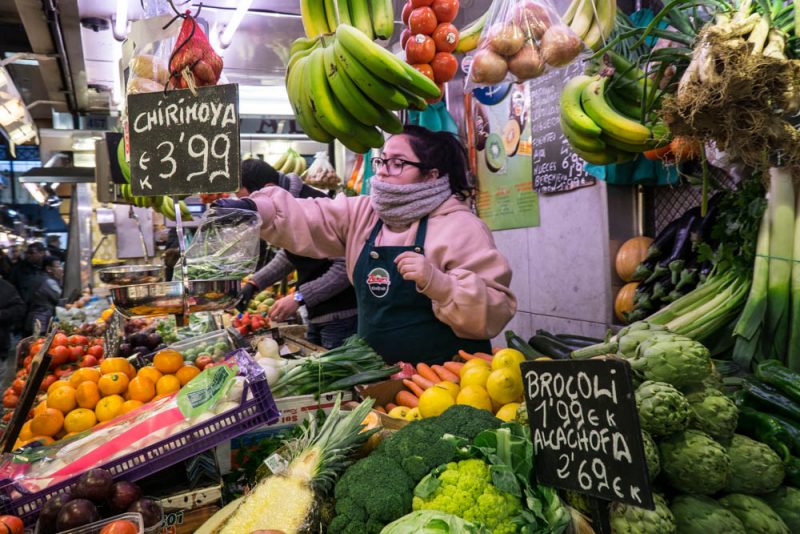
Barcelona is filled with lively “mercats”, market buildings, often with ornate roofs, where locals shop for fresh produce.
La Boqueria is the city’s most famous market, and is therefore much more of a tourist trap, but there is still good produce to be found.
Plus, customers who are happy to shop around and compare prices instead of going to the first place will be rewarded for their patience!
A little further down on the same side of the road is the Teatre de Liceu, the city’s sumptuous opera house.
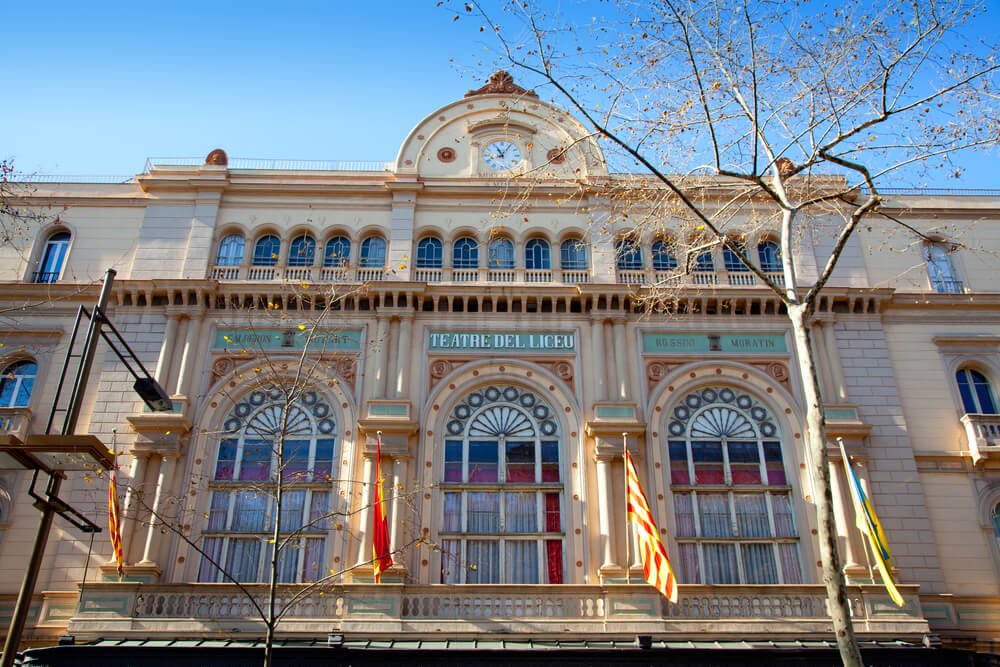
Ravaged by fire in 1994, it has been back in operation since 1999 and hosts both classical and occasionally popular music.
It’s a nice idea to walk through its elegant lobby and enjoy it!
A possible stop for a morning coffee would be next door at the Café de l’Òpera, an establishment which opened in 1929 and looks for all the world like it has been plucked out of a period drama.
On the opposite side of the road you will see the turning for Carrer de Ferran.
By downtown’s Gothic standards, this is positively a wide street, and something about its lampposts and many aged shop façades always fills me with a sense of warmth and romance.
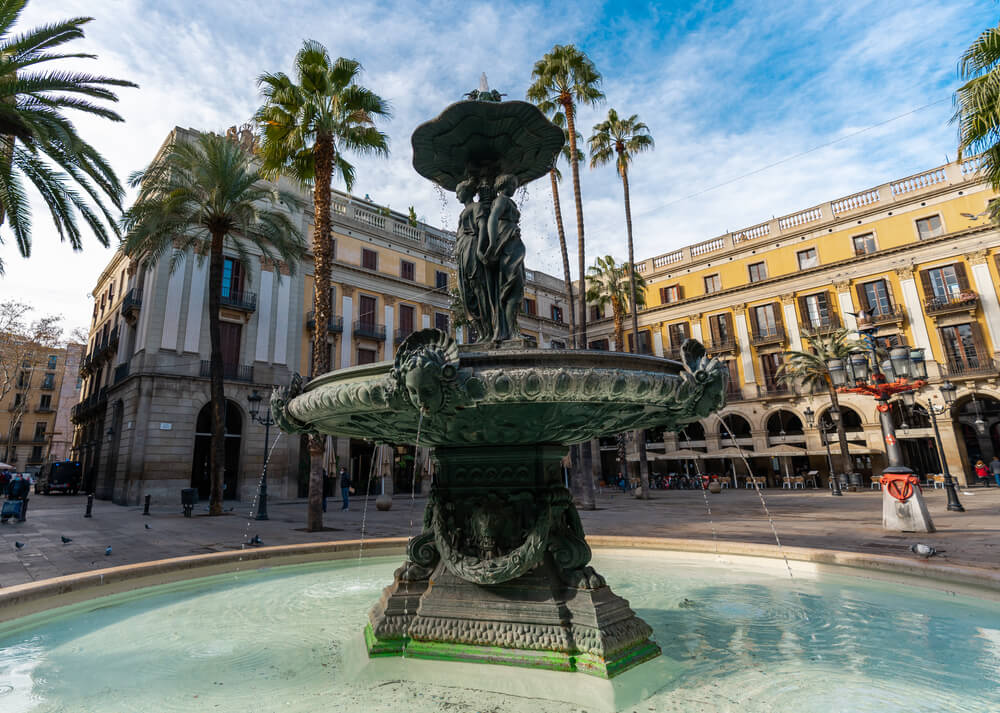
A right-hand turn from Carrer de Ferran will take you through Plaça Reial, an immaculate, classy square which lives up to its “royal” billing.
The basic advice here would be to follow your nose: this is Barri Gòtic, which is an area designed to get lost in.
As long as you basically go in the same direction as the Rambla, you won’t mess with our itinerary, and the essential magic of this area is the sensation of the unexpected.
Here, streets wind in unpredictable directions, and the most elegant boutiques occupy cave-like holes in the wall.
Your mission is simply to soak it in!
Visit the Passeig de Colón and the Port.
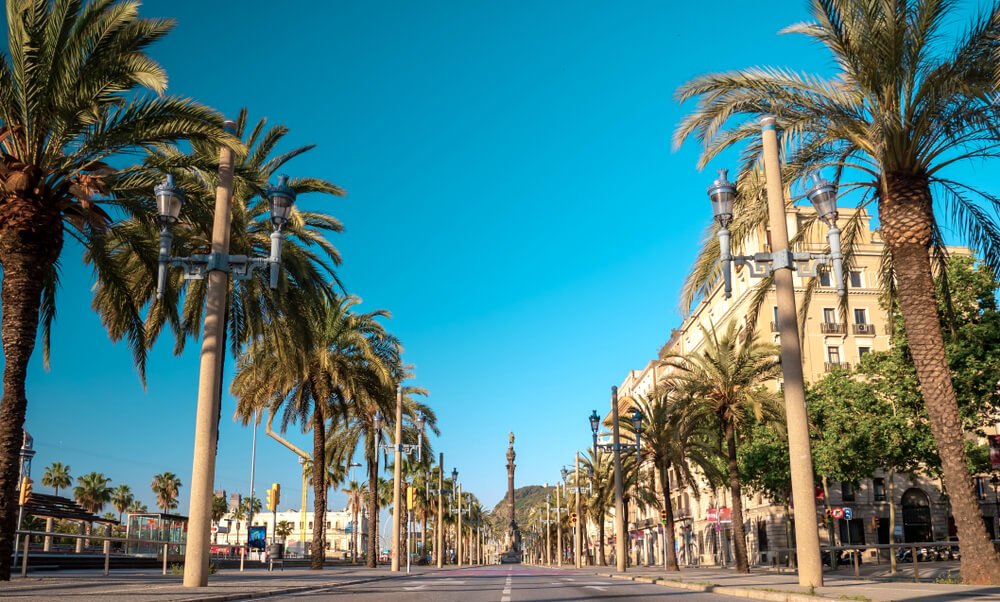
Whether you make it back to the Rambla or not, making your way downtown will spit you out on Passeig de Colón, which is Catalan for Columbus.
Christopher came to Barcelona after his first voyage to the new world, to report his findings.
Today, he is honored with a huge statue at the foot of Las Ramblas, with the mountain Montjuïc providing an equally photogenic backdrop.
Crossing the road from Passeig de Colón takes you to Barcelona’s main port, Port Vell.
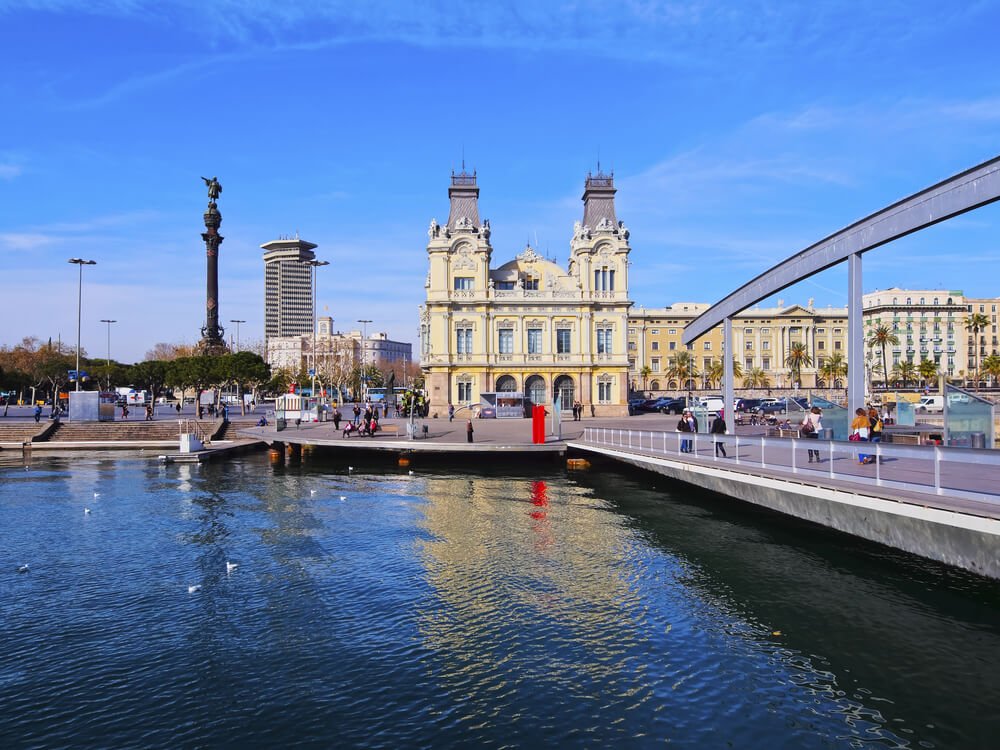
If you follow the port around to the left, you will come across a strip of fancy restaurants in front of the Museum of the History of Catalonia.
This part of town is great for people-watching – and yacht-watching!
Some of the biggest vessels in the world – improbably luxurious, huge things – moor here.
Enjoy some beach time.

Continue in the same direction, downtown as from Las Ramblas, and you will arrive at the beach.
To the right you will see the sail-like W Hotel, and in that direction there is a growing number of posers doing Venice Beach-like shows of strength if that’s your scene.
However, apart from a few high-end beach bars, there is nothing more to see at this end.
Behind the hotel is the more functional end of the port, so I recommend you focus most of your energies heading in the opposite direction.
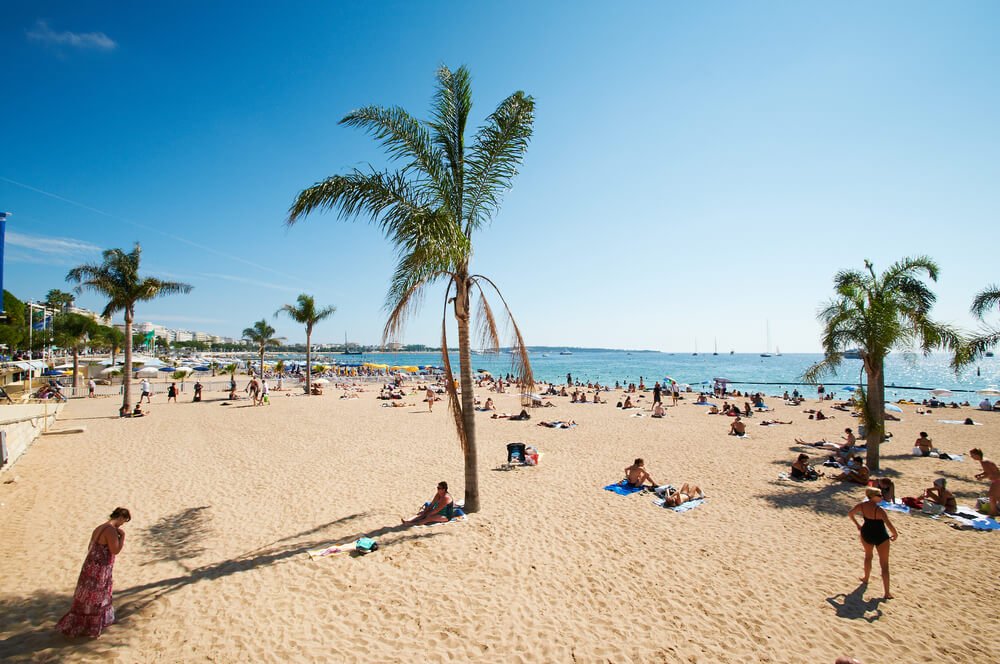
The beach in Barcelona is largely artificial, but it still makes for a pretty killer view!
Sandy and wide and full of people, just walking along the seafront is a pleasure.
If you are looking for a dip or a sunbathe, as a general rule the further you get away from the port, the better – for both water quality and space.
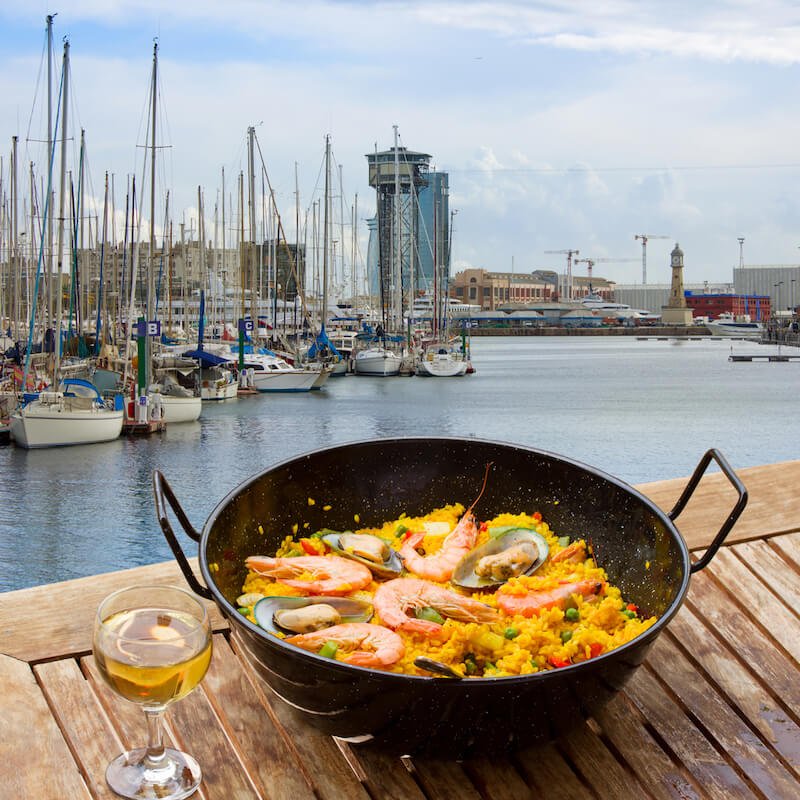
Or alternatively, if your stomach is starting to grumble, a paella by the beach is a bit of a tradition!
Paella is actually an invention from Valencia, further south on Spain’s east coast.
Technicalities aside, it’s still popular in Barcelona, and you can find some good (if pricey) places just a sea breeze away from the sand.
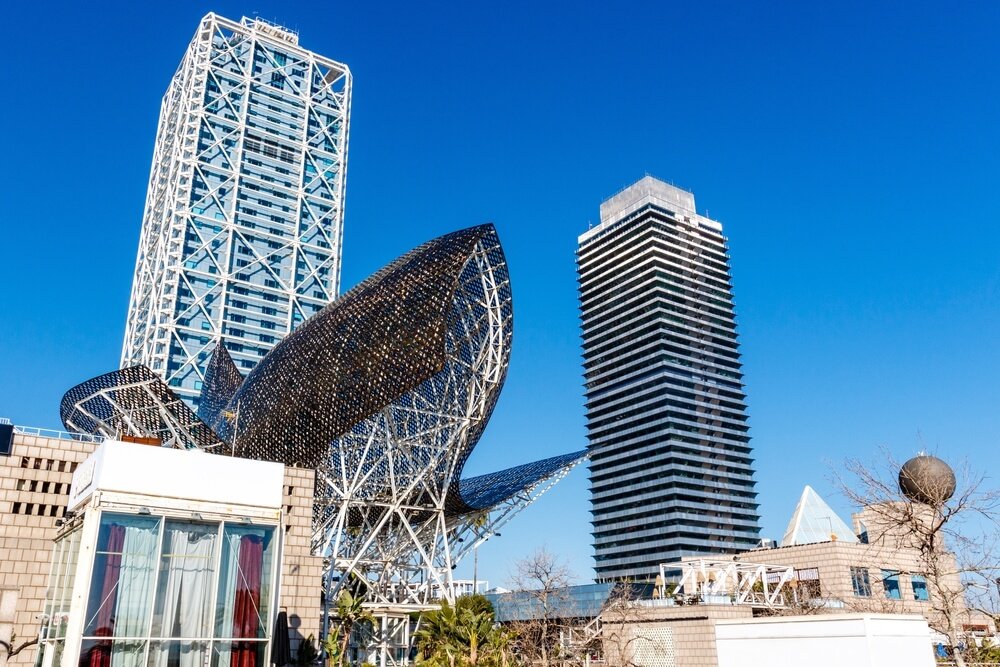
One landmark to help you out in your search is Frank Gehry’s El Peix sculpture.
You will find some famous paella spots before (Marina Bay and Agua) and after (La Fonda, Barnabier and El Cangrejo Loco) Gehry’s loveable, larger than life rendering of a goldfish.
Visit the famous Sagrada Familia.

Time to head to one of Barcelona’s most famous sights, the Sagrada Familia.
Tip — any bus with a V in the name refers to the vertical routes that take you up and downtown!
From the beach, we are going to the Passeig Maritim bus stop and taking the V21 to La Sagrada Familia.
Even if churches aren’t really your thing, this basilica is a must-see, not least because it is a constantly changing monument.
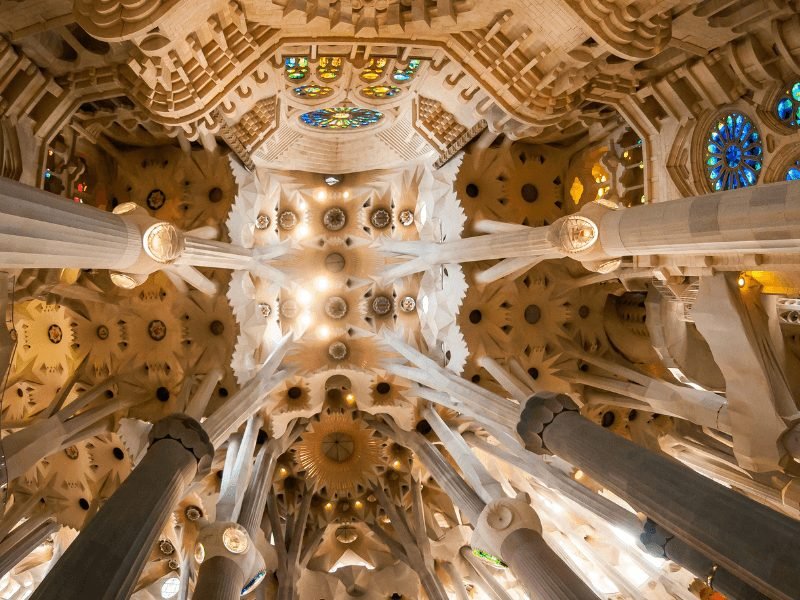
Indeed, if this is not your first visit to Barcelona, some of the wow-factor comes with noting how much it has been altered over time.
Tickets to go inside are steep (see skip-the-line ticket costs here), so it’s worth doing a Google image search before splashing out.
If you do want to check out the interiors – which, to be fair, are pretty stunning – make sure you book in advance.
Explore the Diagonal area and have dinner.
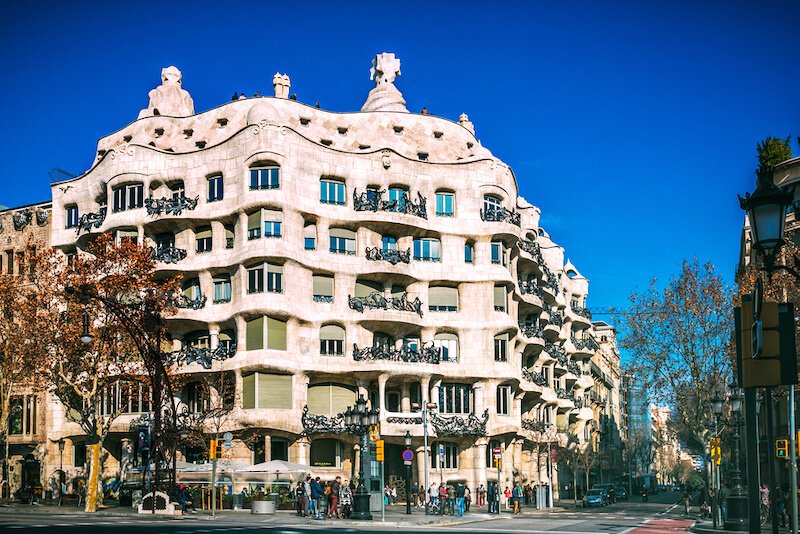
From Sagrada Familia, take the blue metro line to Diagonal and head for the Passeig de Gràcia exit.
This street is as graceful as its name suggests – you will find any number of designer stores down here, and more importantly, two of Gaudí’s masterpieces.
Not far from the metro station is Casa Milà, also known as La Pedrera (“The Stone Quarry”), on the left-hand side.
Far more sensual than the name suggests, this corner-building is impossibly curvy and sinuous, as though it was melted before being kneaded into shape.
Casa Batlló, just three blocks down, is totally different.
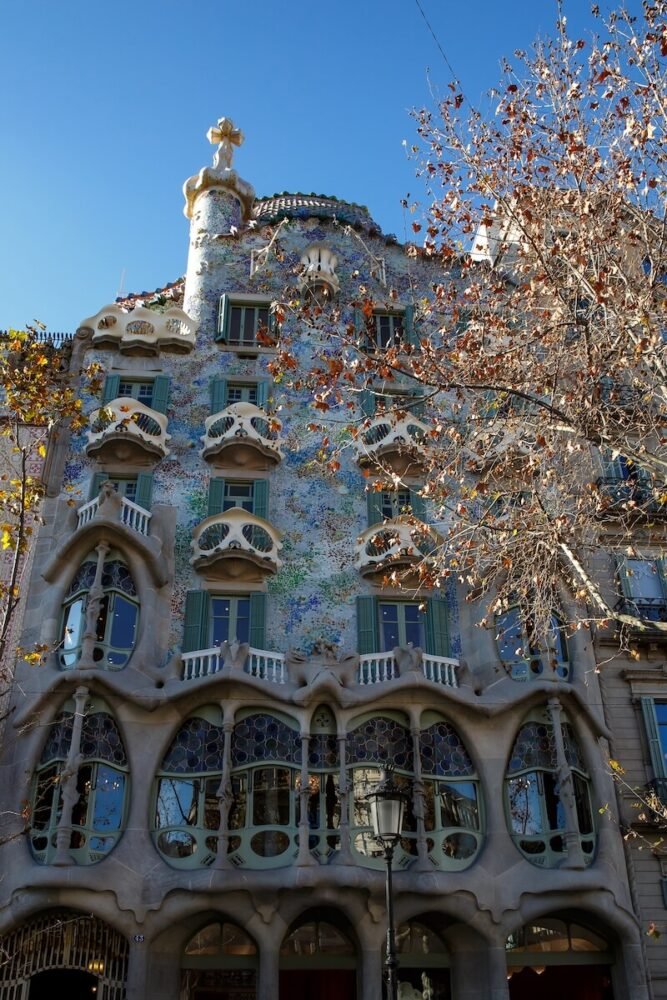
This was Gaudí’s overhaul of a tall, narrow building and its colorful motifs are much more reminiscent of the architect’s work at Park Güell.
For dinner, this area offers a ton of options.
For tapas, I would recommend Cervecería Catalana, a right-hand turn off Passeig de Gràcia in Carrer de Mallorca 236.
It gets busy, so you might have more luck at its sister restaurant, Ciutat Condal, located at the bottom of Rambla Catalunya, which runs parallel to Passeig de Gràcia.
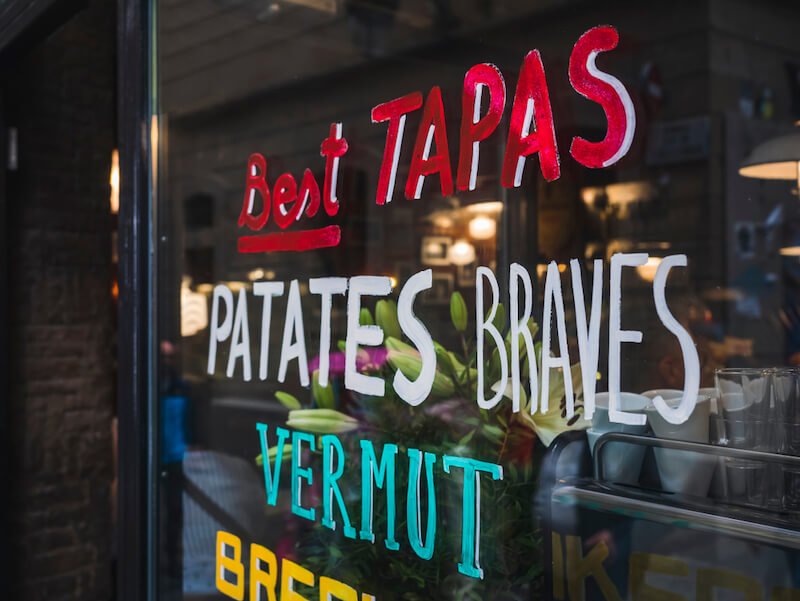
Another glamorous option on Passeig de Gràcia itself is El Nacional (Passeig de Gràcia 24), a self-styled “gastronomic multi-space” where you can try specialities from all different parts of Spain.
Its vibe at nighttime also makes it a fine spot for a cocktail after you’ve had dinner elsewhere.
Talking of drinks, the high-end option to finish the night would be to head to the rooftop bar of one of the city’s hotels, such as Hotel Majestic on the corner of Passeig de Gràcia and Carrer de Valencia.
But don’t feel obliged to blow your budget in a fancy place – one of the glories about this area (and indeed Barcelona in general) is stumbling across a bar.
Wherever you go, you are likely to find beer and wine for a reasonable price, and mind-blowingly large shots of liquor in any mixer you order! Cheers!

Leo McPartland flew to Barcelona on a romantic whim in 2009 and never made it home. He spends his time wandering the city’s streets, beaches and mountains and is at his happiest discussing language learning, comedy and his creative pursuits. He is still more than capable of getting totally lost in Barri Gòtic.